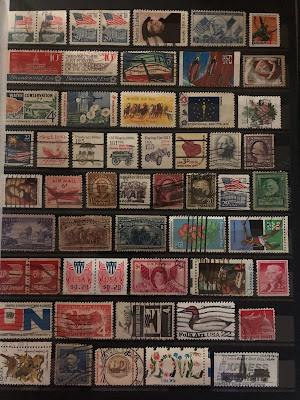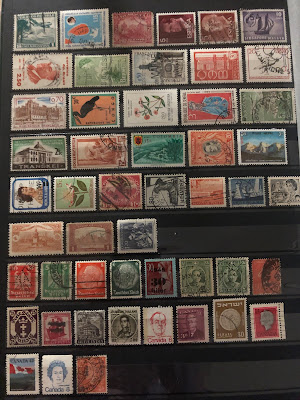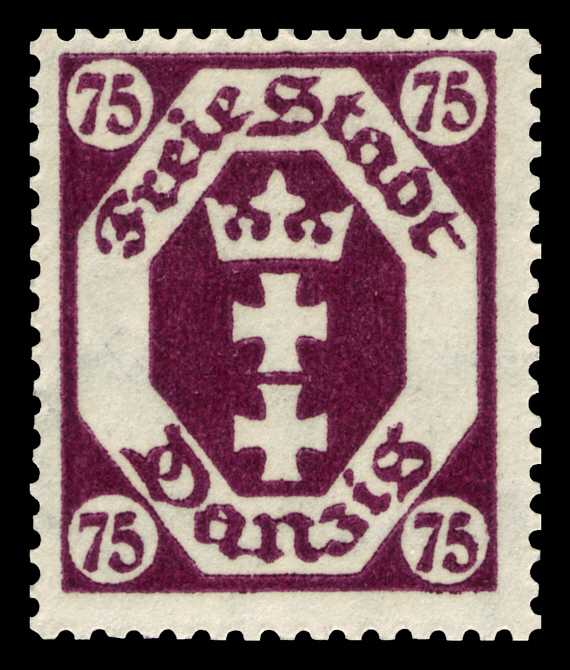*Originally published on another blog of mine, Miscellaneous Notes, now republished here with slight edits and modifications*
Alas, while the USPS and its army of postal workers take a well-deserved break on Jan. 1, a postal tourist knows no reprieve, and — as not one of DC’s post offices is open — went back to the National Postal Museum for the I-lost-count-weeks-agoth time today, mostly because (I presume) many more people want to visit the many Smithsonian museums than send letters on the first day of a new year.
I am also fully aware of my promise to write about the exhibits at NPM, although regrettably this article is not about them. Instead, I headed straight to the museum store, exchanged “Happy New Year” with three security guards, one cashier and several confused fellow visitors, and bought another stockbook alongside two more bags of unsorted stamps to kick-start 2024. Now that I’ve combed through both of them, I suppose it’s not too bad a time to note some reflections, some feelings, and some incoherent thoughts.
The Domestic Stamps

Naturally I started with the bag containing U.S. stamps (mingled with the odd George VI). Most of them I already have, but their magic was not diminished in the least by familiarity. For an hour I spotted the Bahamas aboard Santa María, landed on San Salvador to the detriment of an unsuspecting Guanahani tribe, welcomed Marquis de Lafayette and his armory upon arrival in South Carolina, witnessed Vermont and Arizona join the Union, traveled on a sleigh, a racing car, an oil wagon and the first domestically built locomotive. I also got to deliver mail, sometimes by horse-drawn wagons and more recently by air. There were times of excitement –visiting Yosemite and the 1932 Winter Olympics in upstate New York certainly were among them — until the Century of Progress was punctuated by a time of crisis — The Second World War had Americans call for a swift, decisive victory, the attainment of which ushered in a new era of rebuilding, diplomatic tensions but relative peace under the aegis of international institutions like the United Nations.
The International Stamps
I’ve bought my share of international stamps from the Museum before, but never once has any bag contained so alarmingly many US stamps that got me worried about the sorting staff, who somehow must have frequently forgotten what “USA,” so prominently displayed on many of these stamps, stands for. But then again who am I to fault a likely overstretched and under-compensated worker? As a result I must retract my complaint two sentences ago, and you, dear reader, also should disregard it.

Perusing international stamps always feels different, especially when you happen upon a specimen from an obscure or bygone country, like Nepal or the Ottoman Empire — one belonging to the latter was my favorite acquisition of this day. Information on this particular stamp is lacking, but according to the always helpful Linn’s, back in 1914 (not even a decade before the 600-year-or-so empire was to collapse) the Ottoman postal system, or Postes Ottomanes in French, so often the lingua franca of our postal world, issued some of the Empire’s first pictorial stamps. Known as the “Views of Constantinople” series, its 5-paras (think cents) variant portrays the Maiden’s Tower, a lighthouse / customs house / quarantine station on an island in the Bosphorus, the standing structure of which could be traced back to 1763. This series led to an abundance of variations, such as two surcharged versions for circulation in Western Thrace, a traditionally Greek/Turkish region the disputed sovereignty for which had just reverted to the newborn Kingdom of Bulgaria. The one in my collection, however, was a reissue in 1920 as evidenced by its orange-brown hue.
My second favorite again comes from a country that exists no more — the Free State of Danzig, or the Freie Stadt Danzig, a largely autonomous city-state carved from the Weimar Republic in 1920. Danzig’s political status is as complicated as it gets, being an ethnically German area placed under the League of Nations’ protection but represented diplomatically by the Polish Republic, and one of the city’s post offices was the site of a most heroic Polish struggle against Nazi invasion in 1939.

Even with its historical connections aside, the stamp I refer to (1922 93 Wappen, denomination 75 pfennig) is still one of the more impressive designs I’ve ever seen. The darkish purple background is in itself a noble and well-saturated color, and contrasts successfully with the white, almost intaglio patterns. The diamond-shaped core further gives the central coat of arms a gem-like quality, and surely must stand out in any collection — A simple changing in color yields a multitude of variants that are easily distinguishable, a perfect arrangement for definitives like this.
Now that I’m beginning to sound like a stamp dealer, it’s probably a good idea to move on. While checking foreign stamps, it’s always enlightening (or rather mystifying) to look for a date on the postmark, especially one from the earlier years of last century, and imagine the journey its former carrier might have had.
For instance, I found in today’s bag two Republic of China stamps, more precisely the third Sun Yat-sen definitives of 1937, one of which was cancelled in 1938. If maths adds up, that was either the second or the seventh (depending on what you saw as the beginning) year into Japanese invasion of China (or, if you’re so inclined, into the Second Sino-Japanese War, a name as criminal as calling the American Revolution a “First Anglo-American Conflict” to differentiate it from the “Second Anglo-American Conflict” which is of course the War of 1812), when the entirety of Eastern and much of Northern China had fallen into Japanese hands.
Who sent the letter bearing this stamp which now sits quietly in my stockbook? Surely it must have been destined for the United States — These random stamp bags contain a consistently high concentration of Canadian, British and German stamps, which I suppose all are countries with consistently voluminous correspondence with the United States — so to whom was the writer writing, and about what was their letter? Did they survive this terrible ordeal, or did they perish in the war, with this rusty-colored stamp bearing the only trace of their mortal existence? When you touch a stamp you can’t help but ask such questions, but wherever you look there can be no answers. That’s the peculiar quality of singular stamps like this — they were once parts of something supremely personal, may it be a letter for some faraway relative, a tentative hand to one’s secretly beloved, a postcard sent back home while on vacation, or a distress call — but by nature they can only reach a collector upon this attachment’s severance. A regular collector will hardly ever handle a stamp on an envelope that still contains its original content, and such is deeply regrettable, like staring at a headstone where the name has been weathered away, or an old photo of some long-gone person whose only proof of ever having lived is said image. History erases much of itself, and stamps are but a most imperfect embodiment of our attempt to halt the moving of a clock’s hand, or to build fixtures from sand.
But this building of sand castles must not cease.
Image of the Danziger stamp was retrieved from:
https://commons.wikimedia.org/wiki/File:Danzig_1922_93_Wappen.jpg. Image Credit: Petersen, Public domain, via Wikimedia Commons.
